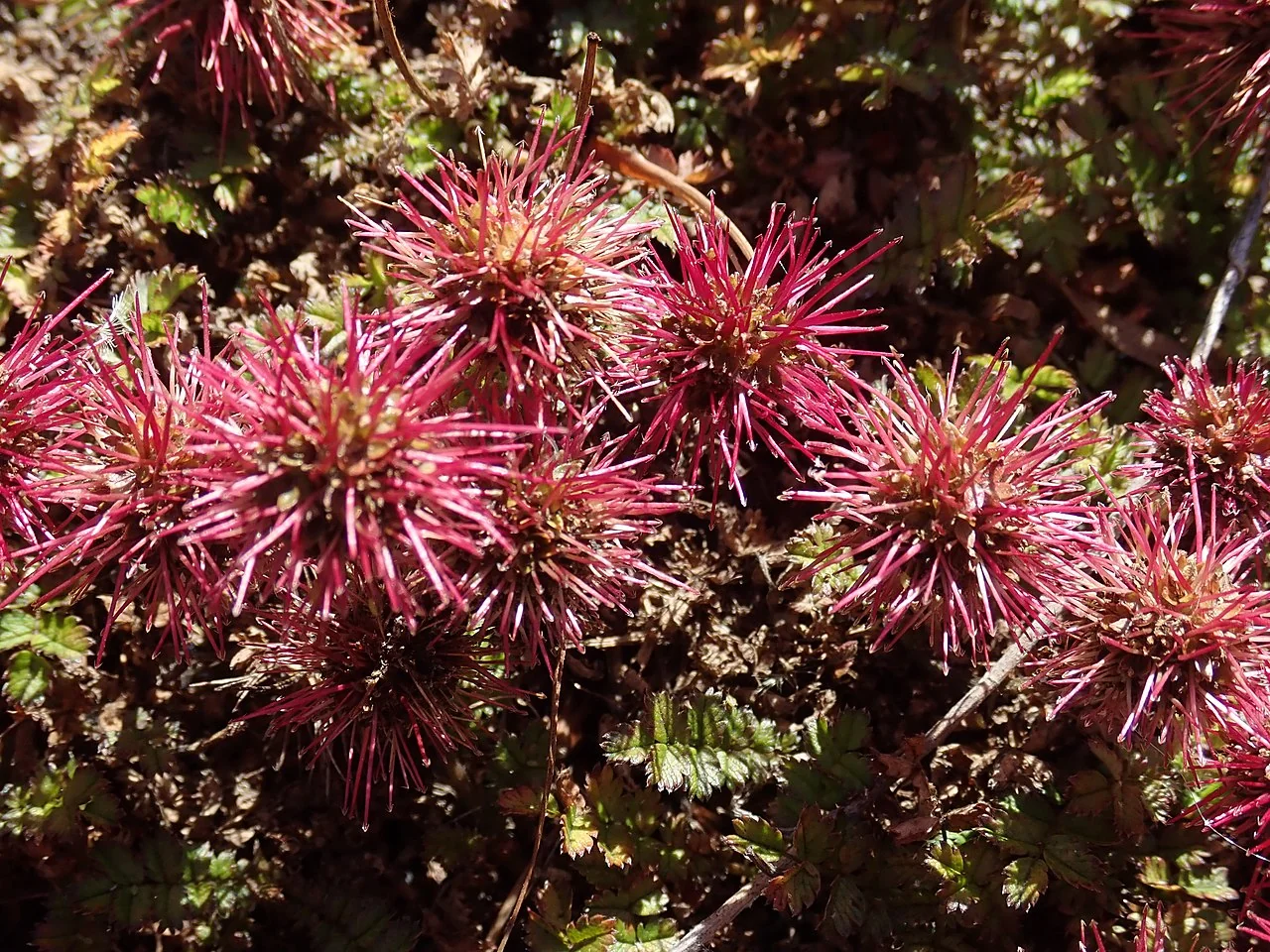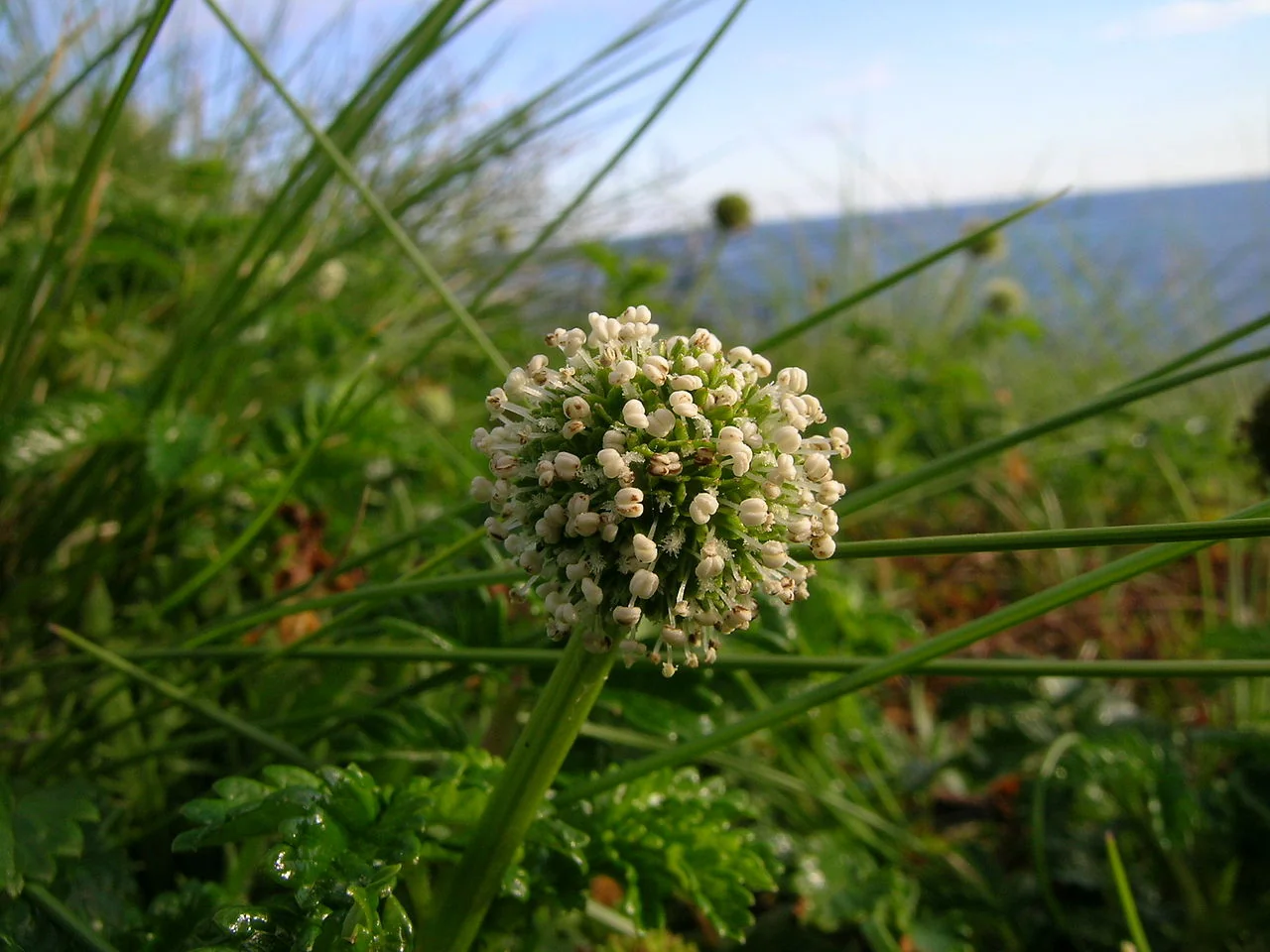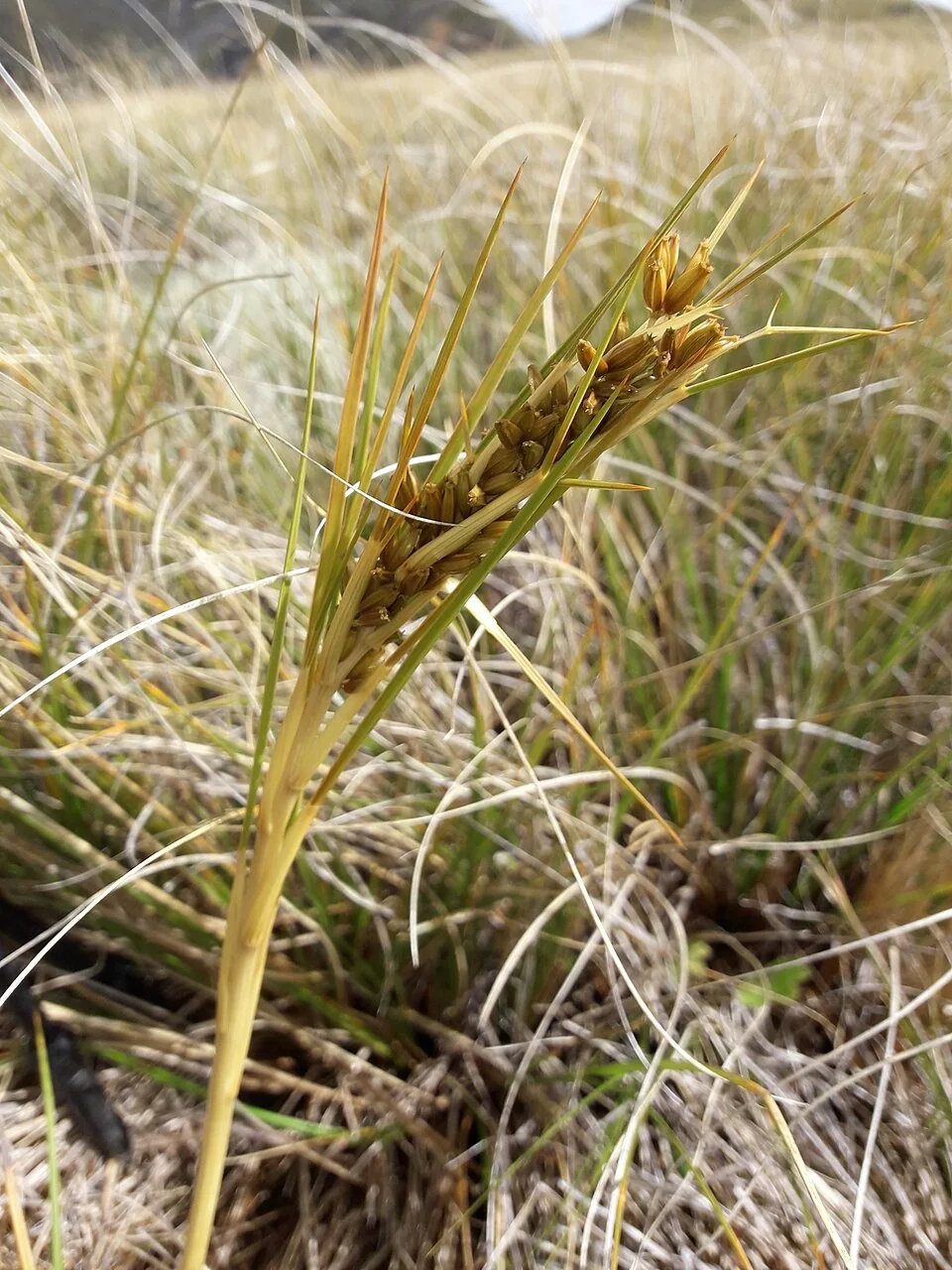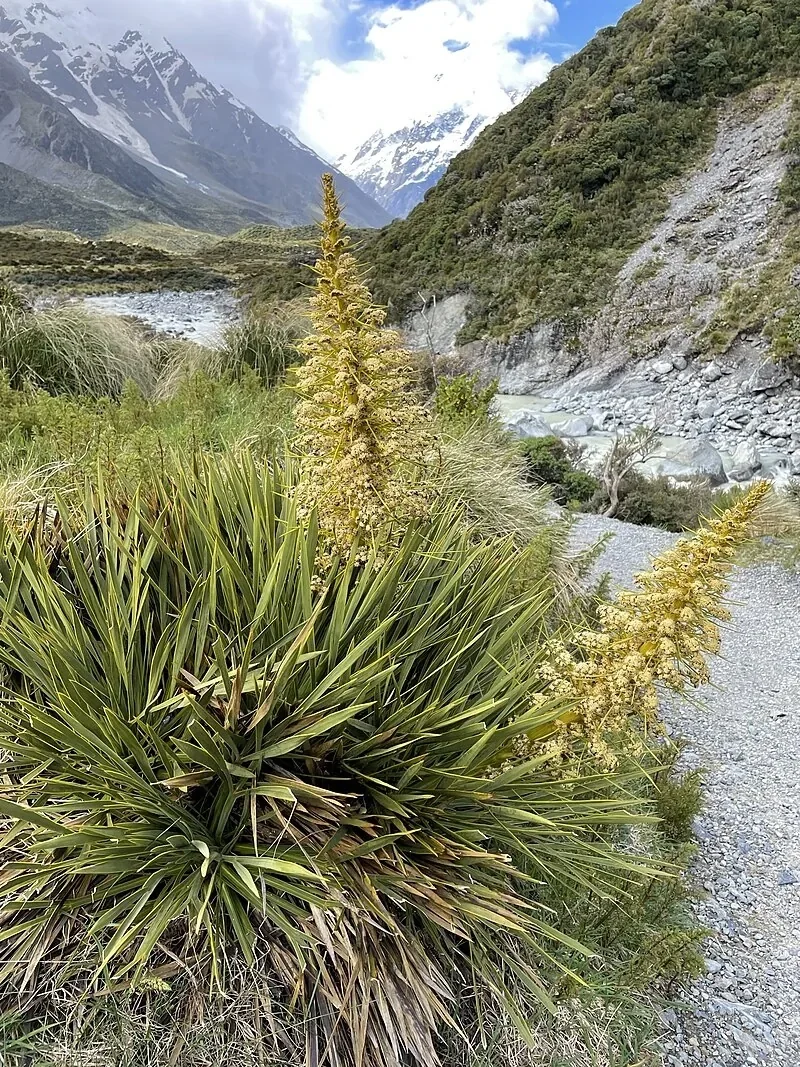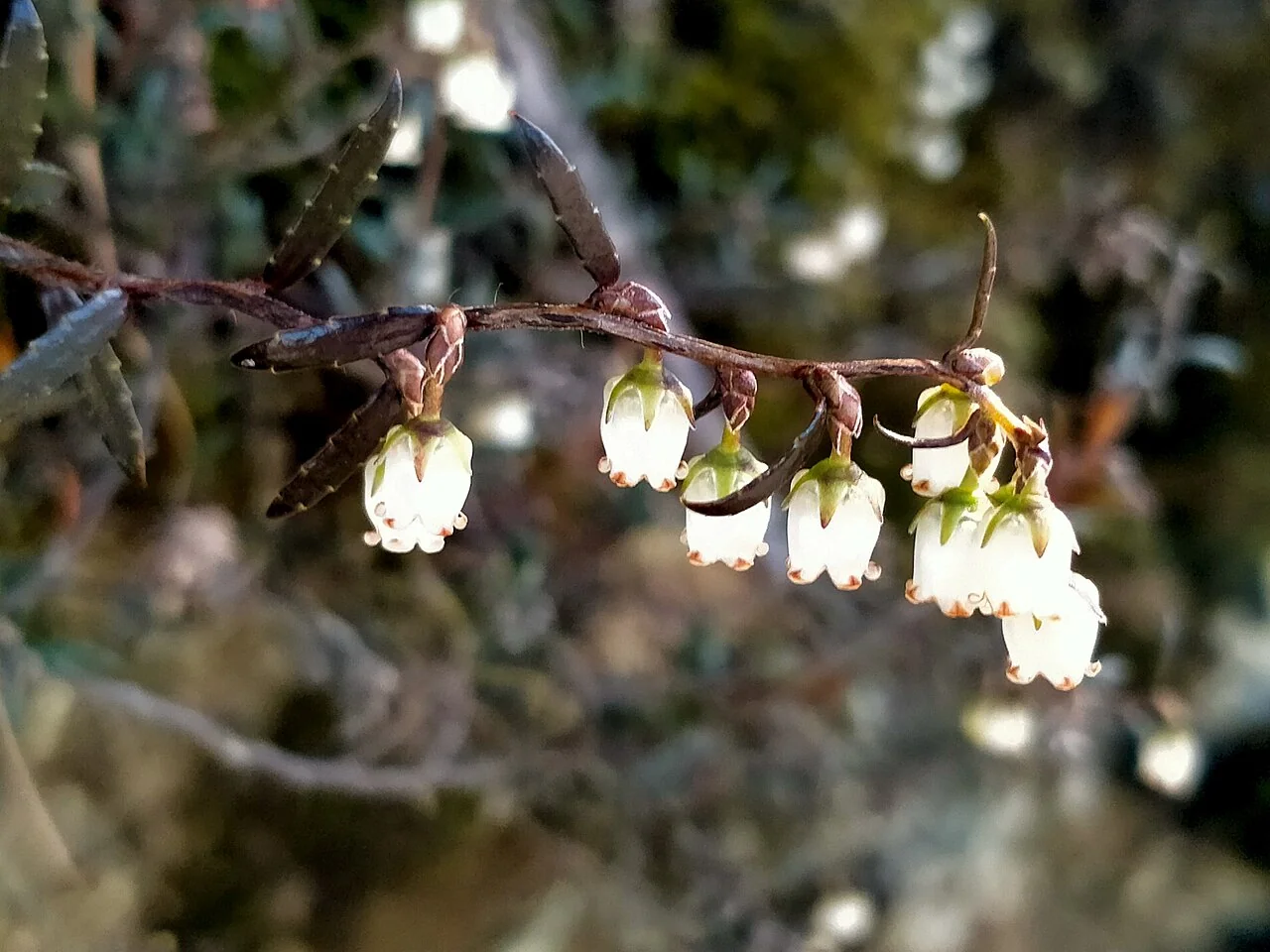
Large Stigma Snowberry
Gaultheria macrostigma
Explore more NZ native plant guides in our index .
Large Stigma Snowberry ( Gaultheria macrostigma ) is a distinctive native New Zealand shrub, recognized by its relatively large stigma, small, leathery leaves, and the characteristic white to pinkish-red berries that adorn it through cooler months. This hardy member of the heath family (Ericaceae) is typically found in subalpine and alpine regions, often growing in open shrublands and rocky areas. Its subtle bell-shaped flowers give way to the prominent, colourful berries that provide a striking contrast against its dark green foliage. Large Stigma Snowberry is an excellent choice for rock gardens, alpine plantings, or as a low-growing shrub in native plant landscapes, offering year-round interest and a touch of high-country beauty.

Plant Description
Botanical Features
Gaultheria macrostigma , also known as Large Stigma Snowberry or Prostrate Snowberry, is an evergreen shrub endemic to New Zealand. It is a low-growing, sometimes prostrate, tangled shrub that can reach up to 0.5 meters in height and 1 meter in spread. Its stems are wiry, flexuous, often interlaced, and can have bristle-like hairs on the twigs. The leaves are narrow, leathery, dark green or brownish, 6-15mm long by 1-3mm wide, with several prominent teeth on the margins, and are present all year. Small, white or pinkish, bell-shaped flowers are clustered at the tip of the twigs, appearing from April to May. The fruit is a globose berry, about 6mm in diameter, which can be white to red and lobed. This species is hardy to UK zone 8 and prefers mildly acid to very acid, well-drained soils. It is found in montane to lower sub-alpine open grassland and rocky places in New Zealand.
Quick Facts
| Scientific Name | Gaultheria Macrostigma |
|---|---|
| Common Name | Large Stigma Snowberry |
| Family | Ericaceae |
| Height | Up to 1 m |
| Spread | Up to 1.5 m |
| Light | Full sun to partial shade |
| Soil | Well-drained, acidic soils |
| Water Needs | Moderate |
| Frost Tolerance | High |
| Salt Tolerance | Moderate |
| Growth Rate | Slow to medium |
| Lifespan | Perennial |
Climate Best Suited to
Large Stigma Snowberry ( Gaultheria macrostigma ) is adapted to the cool, moist temperate climates of New Zealand's subalpine and alpine zones. It thrives in environments with good air circulation and well-drained soils, tolerating strong winds and intense UV radiation. Its high frost tolerance makes it suitable for colder regions, and it can also withstand moderate salt spray in coastal environments, although it is primarily an upland species. Its natural habitat includes open shrublands, rocky slopes, and forest margins at higher altitudes.
Regional Suitability
| Whangārei | Ideal |
| Auckland | Ideal |
| Hamilton | Suitable |
| Rotorua | Suitable |
| Tauranga | Ideal |
| Gisborne | Ideal |
| New Plymouth | Ideal |
| Whanganui | Ideal |
| Palmerston North | Suitable |
| Napier | Ideal |
| Wellington | Ideal |
| Nelson | Ideal |
| Christchurch | Suitable |
| Dunedin | Suitable |
| Invercargill | Suitable |
| City | Climate Suitability |
|---|
Natural Habitat
Typical Environments
Understand the natural habitat of Large Stigma Snowberry ( Gaultheria macrostigma ), which is found in subalpine and alpine zones across New Zealand. This section details its geographical distribution, preferred environmental conditions, and the types of ecosystems where it naturally occurs.
- Widespread in subalpine and alpine regions of the North and South Islands.
- Found on rocky outcrops, open shrublands, and forest margins at higher altitudes.
- Prefers well-drained sites with good air circulation.
- Thrives in full sun to partial shade in cooler climates.
Its presence is a strong indicator of a healthy, functioning upland ecosystem, and understanding its habitat is crucial for successful cultivation and conservation efforts.
Plant Conservation
Gaultheria macrostigma , also known as Large Stigma Snowberry or prostrate snowberry, is a plant species endemic to New Zealand. Its conservation status is currently classified as "Not Threatened" by the New Zealand Threat Classification System (NZTCS), a status it has held since at least 2004. This low-growing shrub is found in upland and montane regions throughout New Zealand.
Growing Requirements
Soil Requirements
Large Stigma Snowberry thrives in well-drained, acidic soils, reflecting its natural habitat in upland and alpine areas. It tolerates a range of soil types from gritty to loamy, but good drainage is crucial to prevent root rot. Incorporating coarse sand or grit can improve soil structure. Avoid heavy clay soils or areas prone to waterlogging.
- Prefers well-drained, acidic soils.
- Tolerates gritty to loamy soil types.
- Good drainage is essential.
- Avoid heavy clay or waterlogged conditions.
Light Requirements
Large Stigma Snowberry performs best in full sun to partial shade. In its natural upland environment, it receives intense sunlight. In garden settings, full sun will encourage a denser, more compact habit and abundant fruiting. Partial shade is tolerated, especially in warmer lowland areas, but may result in leggier growth.
- Full sun to partial shade.
- More compact growth and berries in full sun.
- Adaptable to various light conditions.
Water Requirements
Large Stigma Snowberry requires moderate watering, especially during dry periods and its establishment phase. While it can tolerate some drought, consistent moisture is beneficial for optimal growth and fruiting. Ensure the soil is consistently moist but never waterlogged, as this can lead to root rot.
- Moderate watering needs.
- Tolerates some drought once established.
- Avoid waterlogging.
Planting Guide
Best Time to Plant
The best time to plant Large Stigma Snowberry is during autumn or spring, when temperatures are mild and rainfall is more consistent. This allows the plant to establish its root system before the extremes of summer heat or winter cold.
Choosing a Location
Select a site with full sun to partial shade and very well-drained, acidic soil. It is ideal for rock gardens, alpine troughs, crevice gardens, or as a tough groundcover in exposed, cooler locations. Ensure it has good air circulation.
Planting Steps
- Dig a hole twice the width of the root ball and the same depth.
- Gently remove the plant from its container, being careful not to disturb the roots.
- Place the plant in the hole, ensuring the top of the root ball is level with the surrounding soil.
- Backfill with amended soil (e.g., gritty mix), firming gently around the base of the plant.
- Water thoroughly immediately after planting to settle the soil.
- Apply a light layer of gravel or grit mulch to help retain moisture and suppress weeds, mimicking its natural upland environment.
Initial Care
Water regularly during the first 6-12 months to help establish a strong root system. Once established, Large Stigma Snowberry is reasonably low maintenance and requires less frequent watering. Protect young plants from extreme conditions if necessary.
Ecological Role
Ecosystem Roles
The ecological importance of Large Stigma Snowberry ( Gaultheria macrostigma ) within its native New Zealand upland ecosystems is significant. Its dense, sprawling growth helps to stabilize fragile soils on rocky slopes, preventing erosion and creating microclimates for other upland species.
- Helps stabilize fragile upland soils, preventing erosion.
- Berries provide a food source for native birds and lizards in high-country environments.
- Provides shelter for small invertebrates and contributes to upland biodiversity.
As an endemic species, it is an integral part of the unique biodiversity that has evolved in New Zealand's high country, supporting the delicate balance of its natural habitats.
Uses and Significance
Garden Uses
- Excellent for rock gardens, alpine troughs, and crevice gardens.
- Suitable as a tough, low-maintenance groundcover.
- Provides year-round interest with glossy foliage and colourful berries.
- Ideal for cooler climates and exposed sites.
Cultural Significance
Traditional Uses and Values
Gaultheria macrostigma , also known as Large Stigma Snowberry or prostrate snowberry, holds cultural significance, particularly in New Zealand.
In Māori tradition, various Gaultheria species, including Gaultheria macrostigma , are culturally valued and known by names such as tāwiniwini, kāma, and niniwa. This plant is also recognized for its ecological services in New Zealand, contributing to the diversity of heath family plants in upland environments and being valued in restoration efforts and gardens.
Beyond its ecological role, Gaultheria macrostigma has traditional uses. It is employed in traditional medicine for its antiseptic and anti-inflammatory properties. The fruit of Gaultheria macrostigma is edible and can be consumed raw or cooked. Other Gaultheria species also have traditional medicinal and edible uses; for instance, Gaultheria procumbens is a traditional source of wintergreen flavoring, and its leaves are used for tea.
Landscaping Applications
Large Stigma Snowberry ( Gaultheria macrostigma ) is an excellent choice for landscaping in upland, rock, and native gardens, particularly in cooler climates. Its sprawling form and attractive berries make it a valuable asset for creating resilient and beautiful landscapes.
- Ideal for rock gardens, alpine troughs, and crevice gardens.
- Excellent as a tough, low-maintenance groundcover for exposed sites.
- Provides year-round interest with glossy foliage and colourful berries.
- Suitable for cooler climates and high-altitude environments.
Its ability to thrive in challenging conditions and its aesthetic appeal make it a popular choice for creating unique and ecologically appropriate native landscapes.
Seasonal Care Calendar
Spring
New growth emerges, and delicate bell-shaped flowers may appear. This is an ideal time for planting new Large Stigma Snowberry specimens. Ensure consistent moisture for young plants and protect them from strong winds if necessary. A light feed with a slow-release native plant fertilizer can encourage vigorous growth.
- Ideal time for planting.
- Ensure consistent moisture for new plants.
- Light fertilization if needed.
Summer
Large Stigma Snowberry is actively growing and may produce flowers and developing berries. Consistent watering is important, especially during dry spells, to prevent stress. Monitor for pests and diseases, though it is generally quite resilient.
- Active growth and flowering.
- Consistent watering is essential.
- Monitor for pests and diseases.
Autumn
Berries ripen and become prominent in autumn, persisting through winter. This is another good time for planting, allowing roots to establish before winter. Minimal care is required for established plants, but ensure they remain adequately hydrated.
- Berries ripen and provide winter interest.
- Good time for planting.
- Ensure adequate hydration.
Winter
Large Stigma Snowberry provides excellent winter interest with its persistent berries. It is highly frost-tolerant and requires minimal care during this period. Ensure good drainage to prevent root issues in wet conditions, especially if snow cover is prolonged.
- Provides winter interest with berries.
- Highly frost-tolerant.
- Ensure good drainage.
When to Prune and How Much
Large Stigma Snowberry generally requires minimal pruning. The primary reason for pruning is to remove dead or damaged stems, or to tidy up the plant's appearance. Light trimming can encourage denser growth.
- Remove dead or damaged stems as needed.
- Light trimming to maintain shape and encourage density.
- Best done in late winter or early spring before new growth.
- Use clean, sharp tools.
Avoid heavy pruning, as this can stress the plant. Its natural sprawling habit is part of its charm, so allow it to spread naturally.
How to Grow Large Stigma Snowberry
Large Stigma Snowberry is a distinctive and hardy native shrub that adds year-round interest to alpine and rock gardens with its small, leathery leaves and abundant, often translucent berries. It is a resilient plant, perfectly adapted to the harsh conditions of New Zealand's subalpine and alpine environments, making it an excellent choice for challenging sites. While it is a slow-growing species, its unique aesthetic and ecological importance make it a rewarding plant to cultivate. Understanding its propagation methods is key to successfully growing this specialized species.
From Seed
Propagating Large Stigma Snowberry from fresh seed is a viable method, though germination can be slow and may require stratification. Collect ripe berries in late autumn or early winter. Clean the seeds thoroughly to remove any fleshy pulp. Sow the seeds in a tray filled with a well-draining, acidic seed-raising mix, lightly covering them. The seeds typically require a period of cold stratification (e.g., refrigerate for 2-3 months) to break dormancy. Maintain consistent moisture in the seed tray and keep it in a cool, sheltered location. Germination can take several weeks to months after stratification. Once seedlings have developed a few true leaves, they can be potted into individual containers and grown in a sheltered environment before planting out.
From Cuttings
Semi-hardwood cuttings are the most reliable and efficient method for propagating Large Stigma Snowberry, ensuring that new plants retain the exact characteristics of the parent. Take 5-10 cm cuttings from healthy, non-flowering stems in late summer or early autumn. Remove the lower leaves and dip the cut end in a rooting hormone. Insert the cuttings into a well-draining propagation mix (e.g., sand and perlite). Keep the cuttings in a cool, humid environment, out of direct sunlight, perhaps under a plastic dome or in a propagator. Rooting typically occurs within 8-12 weeks. Once rooted, the new plants can be potted on and grown in a sheltered environment until they are ready for planting.
Pests and Diseases
Large Stigma Snowberry is a remarkably hardy plant and generally resistant to most pests and diseases. Its adaptation to diverse upland environments means it has few significant natural enemies.
Common Pests
- Generally pest-free.
- Occasionally, aphids or scale insects may appear on new growth, but rarely cause significant damage.
Common Diseases
- Highly resistant to diseases.
- Root rot can occur in poorly drained, waterlogged soils, especially if snow cover is prolonged.
- Leaf spot diseases are rare but can occur in very humid conditions.
Good garden hygiene, proper watering, and excellent drainage are key to preventing most pest and disease issues. Healthy, well-sited plants are rarely affected by significant problems.
Bonus Tip
What's in a Name-
The specific name 'macrostigma' comes from Greek and means 'large stigma', referring to the prominent female part of the flower. This is a key feature that helps to distinguish this species from other members of the Gaultheria genus.




